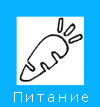Кормление и питание грудных детей и детей раннего возраста. Рекомендации ВОЗ.
Рекомендуемые величины потребления для минералов, не рассмотренных в данной главе (взято из Garrow et al. (8))
|
Фосфор (мг/день) |
||||
|
Возраст |
Великобритания |
США |
Европейский союз |
ВОЗ |
|
0-3 месяца |
400 |
- |
- |
- |
|
Магний (мг/день) |
||||
|
Возраст |
Великобритания |
США |
Европейский союз |
ВОЗ |
|
0-3 месяца |
55 |
40 |
- |
- |
|
Калий (мг/день) |
||||
|
Возраст |
Великобритания |
США |
Европейский союз |
ВОЗ |
|
0-3 месяца |
800 |
500 |
- |
- |
а Желательные величины потребления могут превышать эти величины.
|
Хлор (мг/день) |
||||
|
Возраст |
Великобритания |
США |
Европейский союз |
ВОЗ |
|
0-3 месяца |
320 |
180 |
- |
- |
а Без поправки на большие потери через кожу при потении.
|
Медь (мг/день) |
||||
|
Возраст |
Великобритания |
США a |
Европейский союз |
ВОЗ b |
|
0-3 месяца |
0,3 |
0,4-0,6 |
- |
0,33-0,55 |
a
Верхние уровни обычно превышаться не должны ввиду токсичности.
b Нормативная потребность.
|
Селен (µг/день) |
||||
|
Возраст |
Великобритания |
США |
Европейский союз |
ВОЗ a |
|
0-3 месяца |
10 |
10 |
- |
6 |
литература
- TAUROG, A. Hormone synthesis: thyroid iodine metabolism. In: Braverman, L.E. & Utiger, R.D., ed. Werner & Ingbar’s the thyroid. Hagerstown, MD, Lippincott Williams & Wilkins, 2000, pp. 47-81.
- BERNAL, J. & NUNEZ, J. Thyroid hormones and brain development. European journal of endocrinology, 133: 390-398 (1995).
- STANBURY, J.B. The damaged brain of iodine deficiency: cognitive, behavioral, neuromotor, educative aspects. New York, Cognizant Communication, 1993.
- KOUTRAS, D.A. ET AL. The ecology of iodine. In: Stanbury, J.B. & Hetzel, B.S., ed. Endemic goiter and endemic cretinism. New York, John Wiley, 1980, pp. 185-195.
- WAYNE, E.J. ET AL. Clinical aspects of iodine metabolism. Oxford, Blackwell, 1964.
- PHILLIPS, D.I.W. Iodine, milk, and the elimination of endemic goitre in Britain: the story of an accidental public health triumph. Journal of epidemiology and community health, 51: 391-393(1997).
- Trace elements in human nutrition and health. Geneva, World Health Organization, 1996.
- GARROW, J.S. ET AL., ED. Human nutrition and dietetics, 10th ed. London, Churchill Livingstone, 1999.
- DELANGE, F. Requirements of iodine in humans. In: Delange, F. et al., ed. Iodine deficiency in Europe. A continuing concern. New York, Plenum Press, 1993, pp. 5-16.
- HETZEL, B.S. Iodine deficiency disorders (IDD) and their eradication. Lancet, 2: 1126-1129 (1983).
- DELANGE, F. Endemic cretinism. In: Braverman, L.E. & Utiger, R.D., ed. Werner & Ingbar’s the thyroid. Hagerstown, MD, Lippincott Williams & Wilkins, 2000, pp. 744-754.
- DELANGE, F. ET AL. Physiopathology of iodine nutrition during pregnancy, lactation and early postnatal life. In: Berger, H., ed. Vitamins and minerals in pregnancy and lactation. New York, Raven Press, 1988, pp. 205-213.
- WILLIAMS, E.D. The role of iodine deficiency in radiation induced thyroid cancer. In: Delange, F. et al., ed. Elimination of iodine deficiency disorders (IDD) in central and eastern Europe, the Commonwealth of Independent States and the Baltic states. Proceedings of a conference held in Munich, Germany, 3-6 September 1997. Copenhagen, WHO Regional Office for Europe, 1998 (document WHO/EURO/NUT/ 98.1), pp. 73-81.
- Indicators for assessing iodine deficiency disorders and their control through salt iodization. Geneva, World Health Organization, 1994 (document WHO/NUT/94.6).
- MANNAR, V.M.G. The iodization of salt for the elimination of iodine deficiency disorders. In: Hetzel, B.S. & Pandav, C.S., ed. S.O.S. for a billion. The conquest of iodine deficiency disorders. New Delhi, Oxford University Press, 1994, pp. 89-107.
- DUNN, J.T. The use of iodized oil and other alternatives for the elimination of iodine deficiency disorders. In: Hetzel, B.S. & Pandav, C.S., ed. S.O.S. for a billion. The conquest of iodine deficiency disorders. New Delhi, Oxford University Press, 1994, pp. 119-128.
- DELANGE, F. Administration of iodized oil during pregnancy: a summary of the published evidence. Bulletin of the World Health Organization, 74: 101-108 (1996).
- DELANGE, F. & LECOMTE, P. Iodine supplementation: benefits outweigh risks. Drug safety, 22: 89-95 (2000).
- DELANGE, F. ET AL. Topical iodine, breastfeeding and neonatal hypothyroidism. Archives of disease in childhood, 63: 102-107 (1988).
- DELANGE, F. ET AL. Risks of iodine-induced hyperthyroidism following correction of iodine deficiency by iodized salt. Thyroid, 9: 545-556 (1999).
- BARLTROP, D. Mineral deficiency. In: Campbell, A.G.M. et al., ed. Forfar & Arneil’s Textbook of Paediatrics, 5th ed. Edinburgh, Churchill Livingstone, 1992.
- Complementary feeding of young children in developing countries: a review of current scientific knowledge. Geneva, World Health Organization, 1998 (document WHO/NUT/98.1).
- SAMMAN, S. Zinc. In: Mann, J. & Truswell, S., ed. Essentials in human nutrition. Oxford, Oxford University Press, 1998, pp. 151-157.
- THACHER, T.D. ET AL. A comparison of calcium, vitamin D or both, for nutritional rickets in Nigerian children. New England journal of medicine, 341: 563-568 (1999).
- FOMON, S.J. Sodium, chloride, and potassium. In: Fomon, S.J. Nutrition of normal infants. St Louis, MO, Mosby, 1993.
